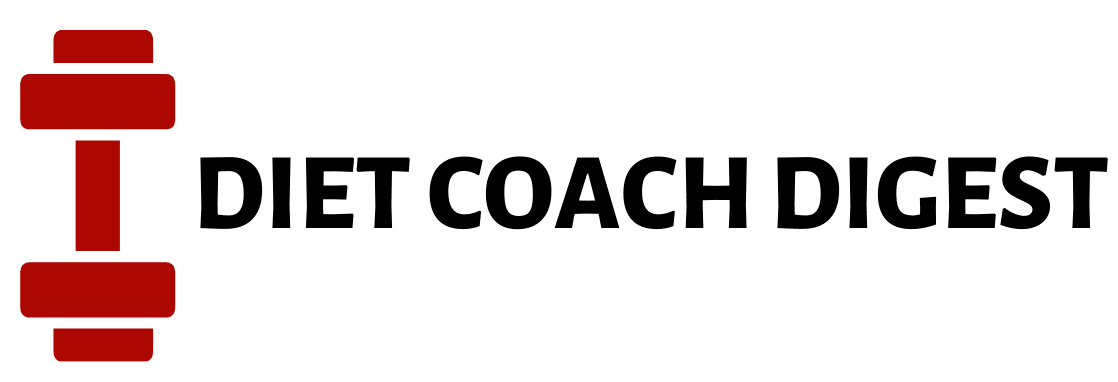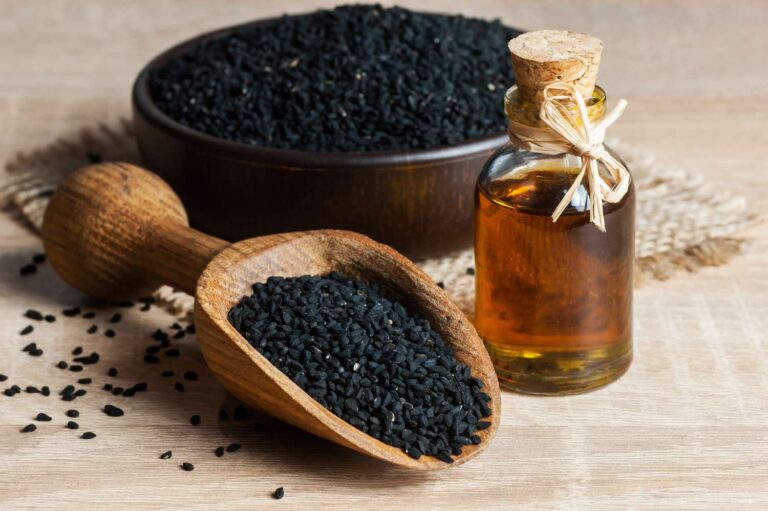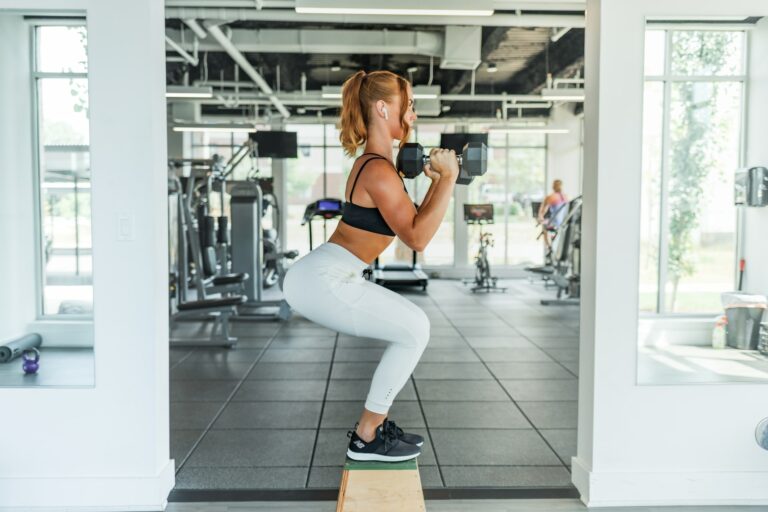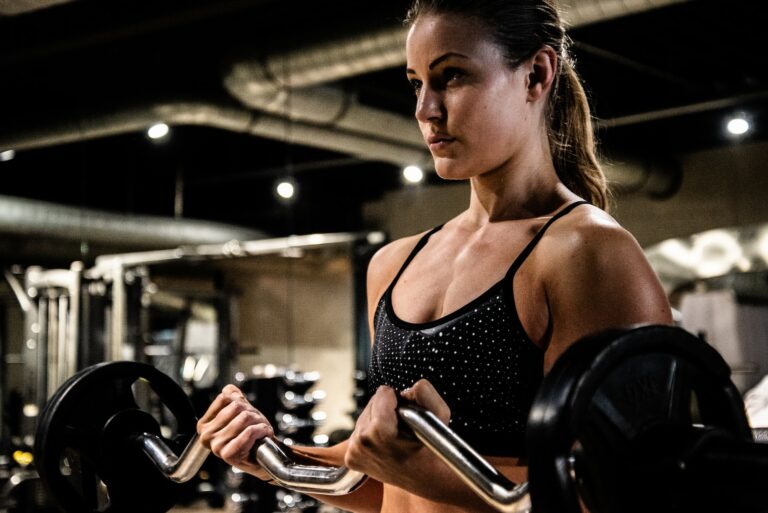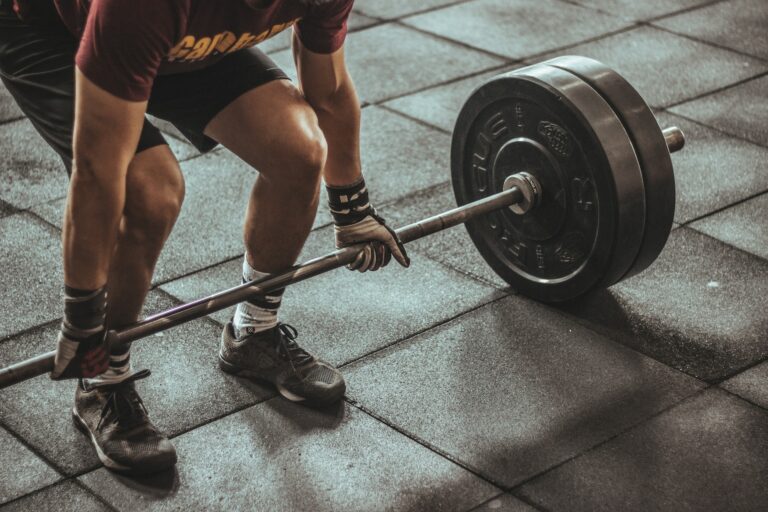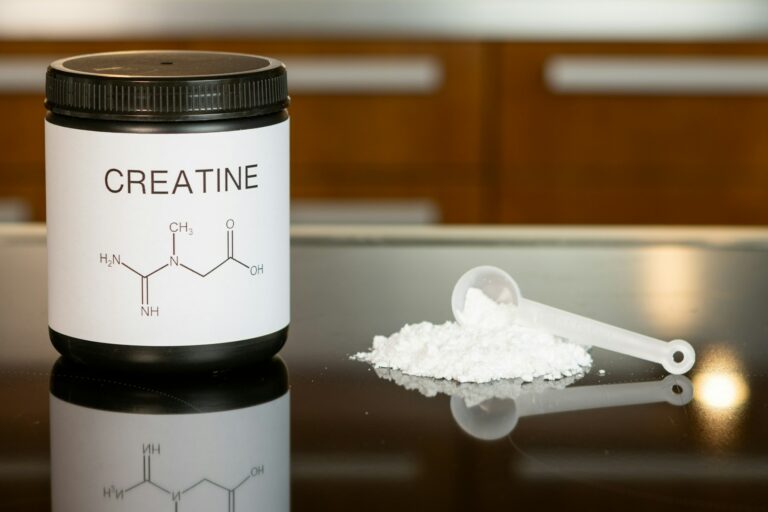Nutrition and Exercise Tips for Improving Bone Density and Muscle Mass

- Should You Train To Muscle Failure Every Set? What You Need To Know - March 4, 2025
- Nutrition in a Hurry: Top Post-Workout Snacks for Active People - February 20, 2025
- 15 Healthy Meal Prep Recipes: Your Weight Loss Made Easy - February 18, 2025
In “Nutrition and Exercise Tips for Improving Bone Density and Muscle Mass,” you’ll discover how the right combination of diet and physical activity can significantly enhance your bone and muscle health. You’ll gain insights into nutrient-rich foods that strengthen your bones and practical exercise routines that build muscle mass, all tailored to help you achieve a healthier, stronger body. Whether you’re a fitness enthusiast or just starting your wellness journey, these tips are designed to fit into your lifestyle seamlessly and boost your overall well-being. Have you ever wondered how you can improve your bone density and muscle mass? Whether you’re aiming to feel stronger, prevent injuries, or simply stay active as you age, optimizing your bone density and muscle mass is a fantastic goal. Grab a smoothie or a cup of tea, and let’s dive into some friendly and practical tips to boost your bones and muscles!
The Importance of Bone Density and Muscle Mass
Understanding why bone density and muscle mass matter is key to making the right changes in your lifestyle. These two components of physical health are interconnected and essential for your overall well-being.
Why Bone Density Matters
Bone density refers to the amount of bone mineral in bone tissue. It’s essential for maintaining strong and healthy bones, which help support and protect your body’s organs. Adequate bone density can prevent conditions such as osteoporosis, a disease that makes bones weak and more likely to break.
Why Muscle Mass Matters
Muscle mass refers to the amount of muscle in your body. Strong muscles are crucial for everyday activities, helping you move and lift things more easily. Additionally, maintaining muscle mass can boost your metabolism and aid in burning more calories, even at rest.
Nutrition Tips for Improving Bone Density
Before diving into exercise tips, let’s focus on nutrition. What you eat plays a significant role in the health of your bones.
Importance of Calcium and Vitamin D
Calcium and Vitamin D are the dynamic duo when it comes to bone health. Calcium builds and maintains strong bones, while Vitamin D helps your body absorb calcium.
Foods Rich in Calcium
Here’s a handy table to help you identify some excellent sources of calcium:
| Food | Serving Size | Calcium Content (mg) |
|---|---|---|
| Milk | 1 cup | 300 |
| Yogurt | 1 cup | 300-400 |
| Cheese | 1 oz | 200-300 |
| Almonds | 1 oz | 75 |
| Broccoli | 1 cup | 60 |
| Sardines | 3 oz | 325 |
| Tofu | 1/2 cup | 250 |
Foods Rich in Vitamin D
Vitamin D can be a bit trickier to get from food alone, so make sure you’re getting out in the sun for at least 15-20 minutes a day as well. Here are some foods that can help you top up your Vitamin D levels:
| Food | Serving Size | Vitamin D Content (IU) |
|---|---|---|
| Salmon | 3 oz | 450-500 |
| Mackerel | 3 oz | 300-400 |
| Tuna (canned) | 3 oz | 230 |
| Fortified Cereal | 1 serving | 40-80 |
| Fortified Milk | 1 cup | 100 |
| Egg Yolk | 1 large | 40 |
Don’t Forget Other Nutrients
Calcium and Vitamin D are crucial, but other nutrients like magnesium, potassium, and Vitamin K also play a role in bone health.
Foods Rich in Magnesium
| Food | Serving Size | Magnesium Content (mg) |
|---|---|---|
| Spinach | 1 cup | 157 |
| Pumpkin Seeds | 1 oz | 150 |
| Black Beans | 1 cup | 120 |
| Avocado | 1 medium | 58 |
Foods Rich in Potassium
| Food | Serving Size | Potassium Content (mg) |
|---|---|---|
| Sweet Potatoes | 1 medium | 540 |
| Bananas | 1 medium | 422 |
| Potatoes | 1 medium | 926 |
| Oranges | 1 medium | 237 |
Foods Rich in Vitamin K
| Food | Serving Size | Vitamin K Content (µg) |
|---|---|---|
| Kale | 1 cup | 547 |
| Spinach | 1 cup | 145 |
| Broccoli | 1 cup | 220 |
| Brussels Sprouts | 1 cup | 156 |
Nutrition Tips for Improving Muscle Mass

Just like bone health, nutrition is a cornerstone for building and maintaining muscle mass.
Protein is Key
Protein is essential for muscle repair and growth. Aim to include a variety of protein sources in your diet.
High-Protein Foods
| Food | Serving Size | Protein Content (g) |
|---|---|---|
| Chicken Breast | 3 oz | 26 |
| Turkey | 3 oz | 24 |
| Lentils | 1 cup | 18 |
| Chickpeas | 1 cup | 15 |
| Greek Yogurt | 1 cup | 10-20 |
| Quinoa | 1 cup | 8 |
Carbohydrates for Energy
Carbohydrates are your body’s primary energy source. Complex carbs provide sustained energy, which is crucial for intense workouts.
Sources of Complex Carbohydrates
| Food | Serving Size | Carbohydrate Content (g) |
|---|---|---|
| Oats | 1 cup | 27 |
| Brown Rice | 1 cup | 45 |
| Sweet Potatoes | 1 medium | 26 |
| Whole Wheat Bread | 1 slice | 12-15 |
Healthy Fats
Healthy fats are important for hormone production, including those that help grow and repair muscle tissue.
Sources of Healthy Fats
| Food | Serving Size | Healthy Fat Content (g) |
|---|---|---|
| Avocados | 1 medium | 21 |
| Olive Oil | 1 tbsp | 14 |
| Nuts (mixed) | 1 oz | 15 |
| Chia Seeds | 1 oz | 9 |
Exercise Tips for Improving Bone Density
You can’t talk about improving bone density without discussing exercise. Weight-bearing and resistance exercises are particularly effective.
Weight-Bearing Exercises
Weight-bearing exercises force you to work against gravity, which helps build and maintain bone density.
Examples of Weight-Bearing Exercises
| Exercise | Description |
|---|---|
| Walking | Simple yet effective. Aim for 30 minutes daily. |
| Jogging/Running | Higher impact than walking, which can boost bone density faster. |
| Hiking | Adds a challenge with natural terrains and inclines. |
| Dancing | Provides the fun factor while being great for your bones. |
| Jumping Rope | Simple, effective, and can be a quick workout anywhere. |
Resistance Training
Resistance training involves exercises that improve muscle strength and stimulate bone growth.
Resistance Training Exercises
| Exercise | Description |
|---|---|
| Weight Lifting | Target different muscle groups. Ensure proper form. |
| Body Weight Exercises | Push-ups, squats, and lunges can be done anywhere. |
| Resistance Bands | Compact and versatile for various muscle groups. |
| Pilates | Focused on controlled movements and resistance. |
| Yoga | Enhances flexibility and incorporates resistance. |
Exercise Tips for Improving Muscle Mass

Building muscle mass involves a combination of resistance training and adequate rest to allow muscles to repair and grow.
Strength Training
Strength training is paramount for building muscle mass. Lifting weights, for instance, can lead to muscle hypertrophy (growth).
Key Strength Training Exercises
| Exercise | Target Muscle Groups |
|---|---|
| Bench Press | Chest, triceps, shoulders |
| Deadlift | Back, glutes, hamstrings |
| Squat | Quads, glutes, hamstrings, calves |
| Overhead Press | Shoulders, triceps |
| Rows | Back, biceps, shoulders |
Compound Movements
These exercises work multiple muscle groups at once, providing efficiency and balance in your workout routine.
Essential Compound Exercises
| Exercise | Target Muscle Groups |
|---|---|
| Pull-Ups/Chin-Ups | Back, biceps, shoulders |
| Dips | Chest, triceps, shoulders |
| Leg Press | Quads, glutes, hamstrings |
| Kettlebell Swings | Full body, primarily glutes, hamstrings, core |
| Farmer’s Walk | Full body, grip strength |
Consistency and Progression
Consistency in your workout routine, combined with progressive overload (gradually increasing the weight or resistance), is key to continually building muscle mass.
Combining Nutrition and Exercise
For optimal results, nutrition and exercise should work hand-in-hand. Let’s explore how to combine them effectively.
Pre-Workout Nutrition
Eating a balanced meal or snack before your workout can fuel your performance. A mix of carbs and protein about 30-60 minutes beforehand is ideal.
Pre-Workout Meal Ideas
| Meal/Snack | Example |
|---|---|
| Smoothie | Banana, Greek yogurt, spinach |
| Whole Grain Toast | Topped with avocado and a boiled egg |
| Oatmeal | Oats with sliced fruit and a spoonful of peanut butter |
Post-Workout Nutrition
After a workout, your body needs nutrients to recover and build muscle. Aim for a mix of protein and carbs within 2 hours of exercising.
Post-Workout Meal Ideas
| Meal/Snack | Example |
|---|---|
| Protein Shake | Water or milk, protein powder, banana |
| Chicken and Rice | Grilled chicken breast with brown rice |
| Quinoa Salad | Quinoa, chickpeas, mixed vegetables, olive oil |
Hydration
Staying well-hydrated is essential for both bone health and muscle function. Drink water before, during, and after workouts.
Hydration Tip
Carry a water bottle with you wherever you go, and aim to drink at least 8 cups of water a day, more if you’re active or live in a hot climate.
Lifestyle Factors
Beyond nutrition and exercise, several lifestyle factors can influence your bone density and muscle mass.
Sleep
Adequate sleep is critical for recovery and muscle growth. Aim for 7-9 hours of quality sleep each night.

Tips for Better Sleep
| Tip | Description |
|---|---|
| Establish a Routine | Go to bed and wake up at the same time daily. |
| Sleep Environment | Keep your room cool, dark, and quiet. |
| Limit Screen Time | Reduce blue light exposure an hour before bed. |
Stress Management
Chronic stress can negatively impact your body’s ability to repair and grow muscle.
Stress Reduction Techniques
| Technique | Description |
|---|---|
| Meditation | Spend 10-20 minutes meditating daily. |
| Deep Breathing | Practice deep breathing exercises to calm your mind. |
| Physical Activity | Regular exercise can be a great stress reliever. |
Avoid Harmful Substances
Smoking and excessive alcohol consumption can weaken bones and reduce muscle mass.
Recommendations
| Substance | Advice |
|---|---|
| Smoking | Quit or reduce smoking. Seek support if needed. |
| Alcohol | Limit to moderate intake. Follow guidelines for safe consumption. |
Monitoring Progress
Keeping track of your progress can motivate you and allow you to make informed adjustments to your regimen.
Tracking Bone Density
While you can’t measure bone density at home, regular check-ups and bone density tests can be helpful, especially if you’re at risk for osteoporosis.
How Often to Test
Discuss with your healthcare provider for personalized recommendations based on your age, gender, and medical history.
Tracking Muscle Mass
Measure improvements in muscle mass through strength gains, body measurements, and physical performance.
Simple Ways to Track
| Method | Description |
|---|---|
| Strength Tests | Track weights lifted and repetitions performed. |
| Body Measurements | Use a tape measure to record changes in muscle size. |
| Progress Pictures | Take photos periodically to visually track changes. |
Conclusion
There you have it! By incorporating a balanced diet rich in essential nutrients, engaging in regular weight-bearing and resistance exercises, and making healthy lifestyle choices, you can significantly improve your bone density and muscle mass. Remember, consistency is key, and it’s all about making small, sustainable changes that you can maintain in the long run.
Now, go out there and get started on your journey to stronger bones and muscles! Your future self will thank you.
Feel free to drop any questions or share your progress; we’re all in this together! Happy healthy living!
Table of Contents
